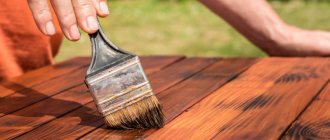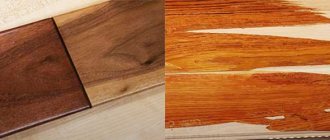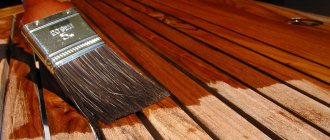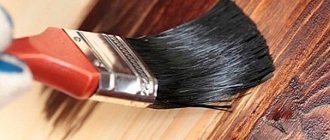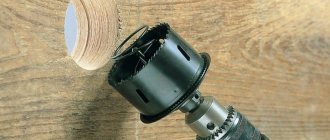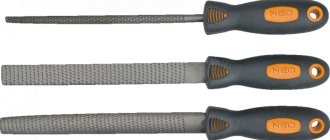Various types of products are used to process wood. Many of them, in particular varnish and paint, are used to create a protective and decorative coating, but they give the wood an unnatural glossy background or completely cover the natural wood grain.
Wood stain gives a completely different result: it not only protects the material from damage and rotting, but also enhances its natural beauty and can even “transform” an inexpensive species into an elite one.
What is stain used for?
In a professional environment, stain for woodworking is called “stain.” This liquid product allows you to give the desired color to wood without changing its texture or pattern. On the contrary, stains emphasize the entire aesthetics of natural wood, enhancing it, and ennoble simple species: after processing, even pine can be “made” into dark oak or other expensive types of material.
Any wooden products, despite their strength, are susceptible to various adverse factors. Using stain, you can protect wood from damage by putrefactive fungi. There are different types of stains, the properties of which depend on the composition.
The main qualities of fighters:
- protection of wood from ultraviolet radiation,
- extermination of woodworms and other pests,
- increasing surface service life,
- wood lightening,
- moisture-proof function,
- possibility of restoration of old products,
- compaction of the material structure,
- preparing wood for further processing - painting, varnishing.
Some stains should be used only indoors - for covering floors, countertops, furniture, interior doors. Others are suitable for outdoor work - for example, for treating the floor on an open veranda. Some products are used only on the surface layers of wood, others are characterized by the possibility of deep penetration. Many modern stains can not only be applied to the base, but also perform various interesting effects - combining tones, creating shades uncharacteristic of wood.
The difference between stain and drying oil, paint, varnish
Stain is a means of adding texture to wood. It penetrates deep into the wood, tinting it from the inside without closing its natural pores and preserving the pattern, while protecting it from rotting and destruction. Drying oil also protects the material from moisture and putrefactive processes, but after its application a film appears on the surface.
Drying oil weakly penetrates into the deep pores of wood, but clogs them from the outside. While stain can become an independent finishing product, drying oil is used only to prepare wood for further work to improve the quality of staining and reduce the amount of paint.
Varnish is also very different from stain impregnation. Varnish is a film-forming agent, and the protective film from it is formed after the solvent evaporates from the surface. Oil varnishes form a super-strong elastic film that is not easy to wipe off even with white spirit. Again, the varnish layer will have to be renewed over time, first removing the previous one. Usually varnishes are used where there is a strong influence of atmospheric factors, and stain will have to be applied too often.
Paint is another popular material for finishing wood. You can paint absolutely any wood product: from floors to window sills or furniture. After painting, a dense, opaque film is formed on the surface, which will completely hide the natural wood grain - this is a fundamental difference from stain. Typically, the color range of paints is far from natural: white, black, brown, and green paints and varnishes are most often sold. After 2-3 years, many types of paints lose their strength, peel off, after which you will have to completely remove the old layer and apply a new one.
Natural oils
Linen
Penetrates deeply into surfaces and may require two coats for proper coverage. But the result is a rich tone.
Teak
It consists of linseed, soybean and tung oils and additives that are harmless to health: castor oil, drier, zinc oxide, rosin. Teak oil perfectly protects wood from moisture, penetrates deeply, creating a protective film. Once cured, it is resistant to ultraviolet rays. Preserves the natural color of wood, slightly shading its texture.
Tung
In many properties it resembles flaxseed, differing only in greater viscosity. The color characteristics are also similar to those of linen. This oil is distinguished by its natural color and soft rendering of wood texture. Tung oil works well on hardwoods.
Types of stains
There are various types of stains on sale, which differ greatly in base, additional composition and properties. You can use any of them at home, but the order of application and drying time are not always the same.
Water stain
Water-based stains are the most inexpensive and popular. They are sold in finished form or come in dry (powder): the latter must be diluted with water before use. The range of shades of water stains is varied, but includes only natural wood tones. Such products should be used to tint wood or enhance the natural color, giving expressiveness to the structure.
Typically, water stain takes 10-14 hours to dry, because complete evaporation of moisture is required to form the coating. Penetration into the structure of the tree will be deep, therefore, protection against rotting will be more reliable. But the moisture resistance of wood will not increase, so it is better not to use such stains for outdoor surfaces.
Other properties of water-based products:
- hiding fiber defects,
- no unpleasant odor,
- environmental friendliness, suitable even for children's rooms, furniture,
- the ability to wash off the stain before it dries completely,
- ease of changing shade in the future.
Usually, after water-based stains, it is recommended to treat the base with a clear varnish: this will enhance protection against adverse influences. Due to deep penetration into the structure of the wood, in some species, individual fibers may rise to the surface, and the product will have to be additionally sanded.
Alcohol and nitromortars
Non-aqueous stain contains alcohol or an organic solvent. The last type of base is present if the name of the product contains the mark “nitro”. Aniline dyes are included as a coloring agent in such products. For work, you can buy ready-made stain or powder, liquid concentrate for dilution with alcohol or white spirit.
It is easy to coat wood with alcohol stain; drying does not require much time, 5-30 minutes is enough. Due to the high drying speed, it is not recommended to apply the product manually: for this purpose it is better to purchase a spray gun. To dilute the thickened stain, just drop a little solvent. Alcohol stains provide excellent protection from moisture and ultraviolet radiation, so they can be used on surfaces used outdoors. The disadvantage of nitromortars is their high toxicity, which is why it is better to work with them only in air.
Oil stain
Oil products contain special synthetic or natural oils and drying oil-soluble dyes. They can be diluted with either drying oil or white spirit. They have a lot of positive qualities:
- environmental friendliness of the composition,
- absence of unpleasant odor and harmful impurities,
- deep impregnation of wood,
- long lasting color for many years,
- imparting a high level of moisture resistance.
Most often, oil stains protect the surface of furniture, wooden floors, and parquet. They are also suitable for outdoor use because they do not fade from sunlight. It is very convenient to apply the products; even a beginner can do it correctly, using any painting tool. The drying time for oil stains is significant (up to 10-48 hours), which needs to be planned before starting work. The base will be ready for further processing only after complete drying.
Acrylic stain
This type of beads is the most modern, so their quality is excellent, although the price is high. Acrylic stains are produced in liquid form; they have a rich palette of shades, both woody and unusual, bright or light. Such compositions have many advantages:
- safety for humans, animals, the environment,
- quick drying,
- no smell,
- easy application, no stains, drips or streaks,
- perfect evenness of the finished coating,
- reliable protection of wood from moisture, rotting, and UV rays.
Wax stain
Wax-based beads have recently appeared on sale. These non-aqueous compounds have a slightly different operating principle: they do not penetrate deep into the wood, but, like varnish, create a film on the surface. The protection of wood after applying wax is so powerful that it is recommended to use it to cover baths, steam rooms, and any outdoor buildings: water will literally roll off the surfaces. Wax sealers can also be used as a base for further painting or varnishing: after them, the paint and varnish materials lay perfectly evenly, without stains.
Rustic stains
This is another type of stain that belongs to the latest generation of means for emphasizing the structure of wood. Most often, rustic stains are used by professionals to install parquet floors. Without work experience, it will be difficult to achieve a beautiful and high-quality result. Masters use such tools to create unusual effects and elegant color transitions. Rustic stains are especially recommended for working on natural oak boards.
Impregnation for wooden surfaces
Wood is a material that ideally combines the qualities a person needs for comfort.
It is beautiful, durable, environmentally friendly and affordable for most consumers. Buildings made of wood are able to preserve for a long time the natural warm color, the unforgettable smell of wood and give the owners a feeling of coziness and comfort. Impregnation of wood can be deep or superficial. Surface protection is created by bio- and fire-retardant impregnation, which saturates the wood with special substances. It is more often used for interior work, where the main goal is to preserve the natural texture of wood and its aesthetic appearance. Deep impregnation is considered more effective and ensures maximum penetration and uniform distribution of the protective composition into the wood. Deep impregnation can only be carried out in industrial conditions, where protective solutions are introduced under pressure into the capillaries of wood. According to their actions, wood impregnation is divided into two types:
- Fire retardants - protect wood from fire and decay, without reducing the natural beauty of the material. Fireproof protection with fire retardants is used for wooden structures in residential, industrial and public buildings.
- Biocides - reliably protect wood from the destructive effects of fungus, insects, mold and significantly increase the service life of a wooden structure.
Color spectrum
Beitz is a unique product that helps give wood a noble shade. The structure of the wood is heterogeneous, different areas are impregnated unevenly, therefore, after the composition dries, an original pattern is created on the surface. The most popular shades of stains are included in the wood range; their names correspond to different types of wood. There are also other types of stains on sale: green, black, red, blue and corresponding to other tones that are usually used for painting furniture. If you can’t choose the right color, stains of the same type and brand can be mixed together.
When purchasing, you should carefully consider the samples on which the stains are applied, because the shade on the label and in reality may not match. The finished color will depend on the following factors:
- original wood shade,
- degree of porosity of the material,
- density,
- breed,
- amount of resin.
Deciduous wood is impregnated much better than coniferous wood, so the tone will be as close as possible to the stated one. To give a light shade, you can purchase a lightening impregnation, which also tends to emphasize the wood grain. There are even colorless stains on sale that do not change the color of the wood, but still have full protective properties.
Impregnations
The appearance of impregnations was caused by the need to give building materials additional characteristics: to make their surface more durable, heat-resistant and impervious to moisture, which, penetrating into any porous material, gradually destroys it from the inside. Impregnation is also indispensable when painting an old surface. It will allow you to compact the lower layers of paint, level the surface, give it a beautiful uniform color and significantly reduce paint consumption.
Modern construction impregnations have the following properties:
1. disinfectants
2. preservative
3. strengthening
4. water-repellent
5. antiseptic
6. anti-salt.
Popular manufacturers
Today there are a large number of stains from different manufacturers on the market. It is difficult to choose the best: many products are of excellent quality and have a reasonable price. You can buy stains at any hardware store: IKEA, Maxidom, Leroy Merlin and others. The selection of a good stain for woodwork can be done from the following list:
- "Novbytkhim" (NBH). Water-based, odorless stain that forms an abrasion-resistant coating. Helps to tint doors, baseboards, railings, trim, boards and other products. It has a rich palette of shades and can be used in decoupage.
- Coswick Wood Stain. Alcohol stain for tinting and protecting wooden bases. Helps to repair minor scratches, chips, and finish edges when installing parquet. Combines perfectly with varnishes.
- "Rainbow 21". Acrylic stain contains special substances to protect against mold and wood-destroying fungi. Has a high degree of adhesion to all types of wood.
- Zar. A quick-drying composition for interior and exterior work, with a self-leveling structure. Apply to wood without stains or streaks.
- Tikkurila Pirtti (Tikkurila Pirtti). A colorless stain that can be tinted according to the Tikkurila pigment catalog in absolutely any color: mocha, antique, villa and others (36 glaze shades).
- Liberon. It is used for the restoration and protection of wooden surfaces, suitable for indoor and outdoor work. The product is resistant to UV radiation.
- Varathane (“Varatan”). Oil stain made from transparent soybean oil, has pure natural shades, and is characterized by deep penetration into the wood.
- Zerwood. Stain is water-based and comes in many colors to match noble types of wood.
- Minwax (“Minwax”). Oil impregnation, which gives beautiful shades to wood and protects products from water and ultraviolet radiation.
- Pinotex Interior (“Pinotex Interior”). Water-based decorative impregnation is widely used for finishing work and protecting wood from external factors.
- "Krafor". The product is used on products used inside and outside buildings. The finished coating is highly polished and does not require varnish.
- "Biotex Universal". Antiseptic impregnation, highlights the wood structure, gives a beautiful shade, extends service life.
- "Vertex". A popular inexpensive water stain that comes in a wide range of shades: rosewood, ebony, beech, walnut and many others.
- Tury. A wood-protective stain that produces an attractive matte finish. Emphasizes the structure of wood, protects against microorganisms.
- Renner. Concentrated product with an emphasizing effect, water-soluble, has 17 basic shades.
- "Latek". Used to highlight wood fibers. Does not fade under the influence of light, is applied evenly, and has high moisture resistance.
- "Belinka". A wax-based wood coating designed for long-term protection of wood from any external factors.
- Herlac. A line of environmentally friendly stains without harmful components. Can be used for any joinery, chipboard, lining, veneer.
Special stabilizing impregnations
Such compositions are used for processing marble and granite, joists, footrails and hidden surfaces, surfaces painted with lime or covered with plaster. Their main function is to strengthen the surface, enhancing adhesive, weather-resistant and water-resistant properties.
To extend the life of wooden structures, special impregnations are used that are designed to protect wood from rotting, pests, and also protect against fire.
Some types of impregnations can be used on carpets and fabrics to give them antiseptic and fire-retardant properties.
Work technology
The method of applying it depends on the type of stain. Typically, a brush, spray, swab, or sponge are used for painting work. It is better to treat unsmooth and large-sized bases with a spray gun (in the first case, do not use a brush so that there are no fallen bristles left on the wood). To use a sprayer, choose a lighter shade of stain: the layer will be thicker, making it appear darker.
Oil products are usually applied with tampons and sponges. Instead of buying, you can make such a device yourself: wrap cotton wool in a cotton cloth or simply cut off a piece of foam rubber. Water and alcohol stains are applied using brushes with synthetic bristles. The quality of the tool must be high, otherwise it will “lose” bristles.
Before the main stage of work, a test painting is always carried out to clarify the required number of layers to obtain the desired shade. The procedure is as follows:
- take a board of the same type as the base material, polish it,
- cover the product with impregnation,
- leave until dry
- apply another layer on 2/3 of the board,
- after drying, apply a third layer of another 1/3 of the workpiece,
- As it dries completely, evaluate the appearance of all three areas and select the optimal shade.
Surface preparation
Impregnation should always be applied only to a clean base. There are usually no problems with a new product. But sometimes you have to process old wood, which has been damaged during long use, has been varnished or painted. Before working with wood, it is necessary to remove the layer of old coatings. You can remove varnish and paint using special removers. If this is difficult, mechanical or thermal effects will come to the rescue:
- First way. Apply an organic solvent to the base, then go over it with a spatula, scraping off the paint.
- Second method (for a thick layer of paint). Moisten the surface generously with the remover, cover with cellophane, remove it after a day and treat the base with a knife, spatula, or sanding machine.
- Third way. Warm up the product with a hair dryer, then remove the paint with a spatula. You can use a blowtorch, but the wood must first be moistened with water.
The remaining coating is sanded off with sandpaper. If there are cracks on the base, they must be sealed with wood putty, and after drying, sand the treated areas. All protruding knots should be cut down, protruding fibers should be eliminated with sandpaper. The raw wood must be allowed to dry thoroughly, otherwise the stain coating will not be of the required quality.
Coniferous species will have to be deresined before applying stain. To do this, you need to prepare a special composition, apply it liberally to the wood, and after 30 minutes, rinse and dry. Here are the recipes for such compositions:
- 750 ml water and 250 g acetone,
- 1 liter of water and 50 g of caustic soda,
- 1 liter of water and 50 g of potassium carbonate, 60 g of soda ash.
Applying stain to the surface
Before you start tinting the wood, all untreated surfaces must be covered with film or their edges must be covered with masking tape. The technique of treating wood with stain is almost no different from conventional painting. It is only important to act quickly so that the coating is more uniform. Don't put too much product on your brush; it will leave unsightly streaks.
Woodworking should always be parallel to the direction of the wood grain. The stain is first diluted to the desired consistency, if required. Here are other recommendations for tinting surfaces:
- you cannot proceed to processing a new section without completely painting the previous one,
- at the junction of two sections, it is important to ensure that the layers of stain do not overlap each other,
- the most beautiful coating is obtained when using the spraying method: the risk of stains and unpainted areas is minimal,
- rubbing oil stain with a rag gives the effect of oak even on the cheapest material,
- the first layer is always made the thinnest, it will create a base and reduce material consumption for subsequent layers,
- most often, to give the optimal color, 2-3 layers of stain are required, each of them thoroughly dried.
After the water sealant dries, raised wood fibers inevitably appear on the surface. They need to be cleaned with a coarse cloth in a longitudinal, diagonal direction.
Applying stain to stain
If you want to update the color of the wood, you can purchase another stain and apply it over the previous one. It is only important that its tone is not lighter, otherwise the desired color will be difficult to achieve. Typically, re-tinting requires only 1-2 layers of stain.
Stain on varnish or paint
Since varnish and paint create a dense protective film on wood, stain will not be able to penetrate the fibers, saturate the material and highlight its structure. The product will simply dry on the layer of varnish or paint, staining the surface. First you need to completely remove the previous coating and only then apply the stain.
Consumption and drying time
Consumption per 1 m2 depends on the type of stain, as well as on the quality of wood preparation and method of application. So, for acrylic stain this figure is about 120 g/sq.m. m, for oil – up to 150 g, for water and alcohol – from 50-70 g. Drying time also depends on the type of stain. Water and oil coatings dry in 10-14 hours, alcohol coatings dry almost instantly, acrylic coatings dry in 60 minutes, wax coatings dry in 10-15 hours. For oil-based coatings, the time before use should be at least 2-4 days.
Dealing with defects
It happens that the stain is applied to the surface incorrectly. Here are the main ways to eliminate defects:
- For numbness. Immediately after tinting the wood, you need to cover the area with varnish, which will dissolve the stain. Then clean the treated area with a rag. When the drip has already dried, it will have to be softened with white spirit or ground off with sandpaper.
- For stains. If we are talking about plywood, you will have to remove all the veneer using a plane. Solid wood is also processed with this tool, removing the thin top layer.
How can I remove stain?
The easiest way to remove water stain from your hands or treated wood. Of course, you can only remove the top layer, because such stains are distinguished by deep penetration. Stained clothes can be washed with regular powder, then rinsed with conditioner. If necessary, use oxygen bleaches, and chlorine bleaches on white items.
If stain gets on linoleum, wipe off the stain with acetone or white spirit. You must work carefully so as not to discolor the surface of the material. You can get rid of stain stains on the skin using vegetable oil or by frequently washing your hands with soap. It is much more difficult to remove non-aqueous types of stains from surfaces; you will have to remove the top layer of wood along with the tinting coating.
Alcohol-based formulations
They are sold in the form of powders and fully prepared liquid solutions. During the processing of wood, only pigmenting additives are absorbed into it, and the alcohol/solvent evaporates without leaving a residue. It is for this reason that alcohol impregnation takes about 30 minutes to dry. Fast drying is both a plus and a minus of alcohol stains. The fact is that the surface needs to be processed quickly - otherwise unevenly painted areas may appear on it, which will be noticeable. Only an experienced painter can apply this type of wood impregnation by hand. In general, it is much easier to work with it using spray guns.
